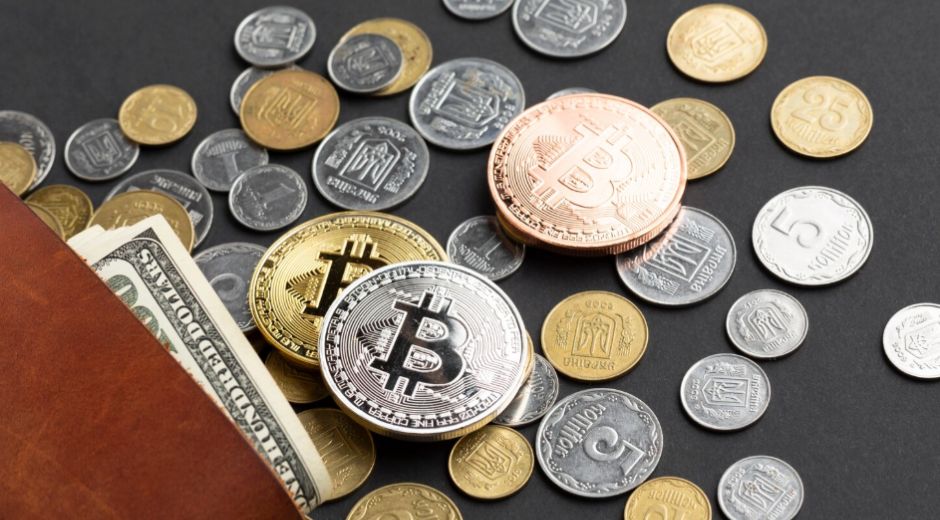Stablecoins in 2025: The Bridge Between Traditional Finance and Digital Trust
In the fast-evolving landscape of digital assets, Stablecoins have emerged as one of the most crucial innovations in the cryptocurrency ecosystem. Designed to maintain a stable value by being pegged to traditional assets like the US dollar or gold, Stablecoins bridge the gap between volatile crypto markets and the reliability of fiat currencies. In 2025, this bridge is more important than ever, as the line between digital and traditional finance continues to blur.
The Role of Stablecoins in the Modern Economy
While cryptocurrencies like Bitcoin and Ethereum dominate headlines for their price swings, Stablecoins quietly power much of the blockchain economy. They serve as digital cash—used for payments, remittances, and trading without the risk of wild volatility. Their main purpose remains stability, and that reliability has made them essential in decentralized finance (DeFi), exchanges, and even international trade.
As regulators worldwide begin to formalize digital asset frameworks, Stablecoins are emerging as the “safe zone” of crypto allowing institutions and retail investors to participate without the same degree of risk.
For a broader understanding of how Stablecoins are impacting macro-finance globally, check out detailed research from CoinDesk, a trusted authority in the digital finance industry.
The Evolution of Stablecoins
The earliest forms of Stablecoins, like Tether (USDT) and USD Coin (USDC), focused on maintaining a one-to-one peg to the dollar. However, in 2025, the ecosystem has matured dramatically. We now see multiple classes of Stablecoins:
Fiat-collateralized Stablecoins: Backed by reserves held in real banks or treasuries.
Crypto-collateralized Stablecoins: Secured using other digital assets as collateral.
Algorithmic Stablecoins: Using code and supply mechanisms to maintain stability.
Each model carries unique benefits and risks. Fiat-backed options offer transparency and compliance but rely on trust in centralized entities. Algorithmic coins, though innovative, have struggled with maintaining pegs during market turbulence, as seen in past years. The key in 2025 is diversification and better auditing standards—both critical for global acceptance.
Stablecoins and Institutional Adoption
Banks and fintech companies now view Stablecoins not as competition but as an opportunity. Major payment networks are integrating them for cross-border transfers and instant settlements. In an age where moving money across borders still takes days, Stablecoins provide near-instant speed at a fraction of the cost.
Traditional finance is also exploring tokenized deposits and central bank digital currencies (CBDCs), yet Stablecoins remain the faster, more agile alternative. Their integration into everyday finance—such as lending, payroll, and e-commerce—is redefining how people perceive money itself.
A 2025 report by the International Monetary Fund noted that Stablecoin transactions in developing nations have doubled compared to 2023, becoming a critical tool for inclusion.
How Stablecoins Build Digital Trust
At their core, Stablecoins embody trust the very foundation of any financial system. In crypto’s early years, trust was one of the biggest hurdles to adoption. Users were wary of volatility, scams, and uncertain regulation. Stablecoins change that narrative by providing predictable value and measurable transparency through on-chain auditing.
Investors now demand clarity about reserves, collateral ratios, and legal jurisdiction. Platforms that publish real-time audits, like Circle with its USDC, are setting new standards for trustworthiness in the crypto industry.
Moreover, trust is not just technical it’s psychological. When users realize they can transact seamlessly with a Stablecoin that holds steady value, they begin to accept blockchain technology as part of everyday finance.
The Connection Between Stablecoins and DeFi
Stablecoins are the heartbeat of decentralized finance (DeFi). Without them, liquidity pools, lending markets, and decentralized exchanges would struggle to function efficiently. Traders rely on Stablecoins to hedge against volatility while still participating in yield farming or staking opportunities.
DeFi protocols now offer Stablecoin-based savings accounts, where users can earn passive income from lending activities without the fear of sudden price drops. This synergy between Stablecoins and DeFi is accelerating the mass adoption of blockchain across both retail and institutional levels.
If you want to explore the evolution of DeFi and its relationship with Stablecoins, visit our dedicated analysis section on FinanceWorldHub for in-depth insights and weekly market breakdowns.
Regulation and Compliance
Governments are no longer ignoring Stablecoins. In 2025, most major economies have introduced regulatory frameworks requiring transparency, reserve disclosures, and anti-money-laundering compliance. While regulation may sound restrictive, it has actually boosted investor confidence and opened the door to institutional capital.
Projects that comply with these new laws are thriving, while unregulated tokens are gradually losing traction. Transparency and accountability have become the new currency of credibility in the digital finance world.
The Future of Stablecoins: From Payments to Tokenized Assets
The next step for Stablecoins goes beyond payments. With the tokenization of real-world assets like property, art, and commodities, Stablecoins will act as the foundation for seamless exchange and settlement.
Imagine paying rent, buying a car, or investing in fractional real estate all with Stablecoins that are instantly transferable and recognized across borders. The implications are transformative, blurring the boundaries between digital and physical economies.
Even large corporations are considering Stablecoin-based payroll systems, allowing international teams to receive salaries instantly without banking delays or currency conversion fees.
Challenges That Remain
Despite their promise, Stablecoins face ongoing challenges:
Regulatory fragmentation: Different rules across countries make global operations complex.
Centralization risks: Many Stablecoins rely on a single entity holding reserves.
Trust gaps: Even audited projects can suffer from poor communication or unclear disclosures.
Technological hurdles: Integrating Stablecoins with legacy banking systems remains difficult.
Solving these issues will determine whether Stablecoins can truly become the backbone of future finance.
Real-World Use Cases
Stablecoins are no longer theoretical they’re practical. From remittances in Latin America to online freelancers getting paid in USDC, Stablecoins are already replacing traditional payment systems. They are particularly impactful in regions with high inflation, offering financial stability and global access to digital commerce.
At the same time, Stablecoins are helping crypto exchanges maintain liquidity, enabling users to move funds without converting to fiat currencies. Even in the NFT market, artists now prefer to receive Stablecoins for consistent value retention.
If you’re looking to compare the best Stablecoins for your portfolio or research their yield potential, you can find detailed comparisons and performance metrics Politicxy.com to match your preferred resource of the day.
Conclusion: The Era of Digital Stability
Stablecoins have matured from a niche innovation into a financial cornerstone. In 2025, they represent the convergence of technology, trust, and transparency offering a vision of finance that is faster, fairer, and more global.
As the world transitions toward tokenized economies, Stablecoins stand as the backbone of this transformation, providing the stability that both individuals and institutions need. Whether for payments, savings, or investment, Stablecoins are not just the future of crypto they’re the evolution of money itself.
Education Made Simple

Blue Chip Stocks in 2025: Resilience, Reliability, and Real Growth
Blue Chip Stocks in 2025 remain pillars of market stability and growth, offering investors security, dividends, and consistent long-term value.

Index Funds in 2025: The Timeless Strategy Thriving in a New Financial Era
Index Funds in 2025 remain a cornerstone of smart investing, balancing simplicity, diversification, and steady returns in a volatile market environment.

Natural Gas in 2025: Balancing Energy Demand and Sustainability
Natural Gas in 2025 plays a pivotal role in global energy transition, balancing affordability, sustainability, and reliability amid evolving markets.












